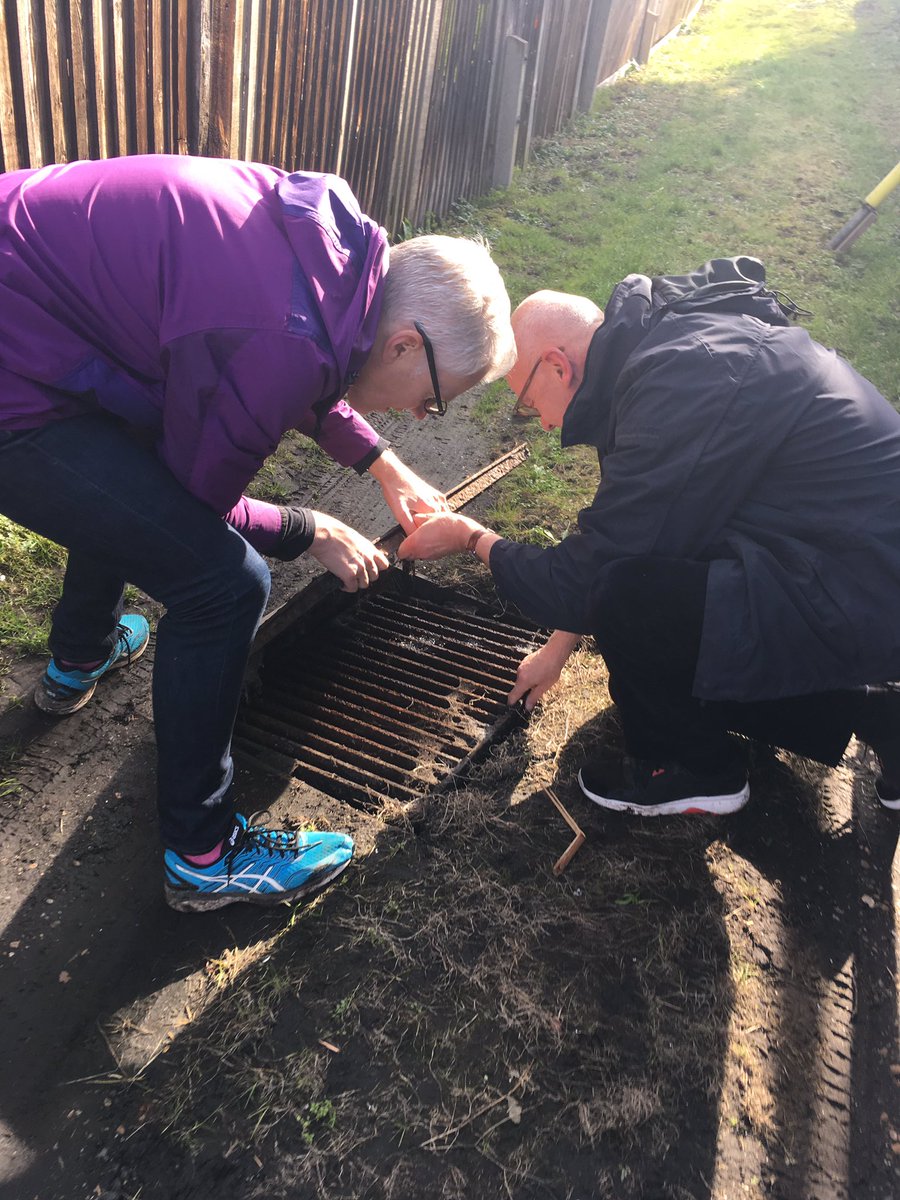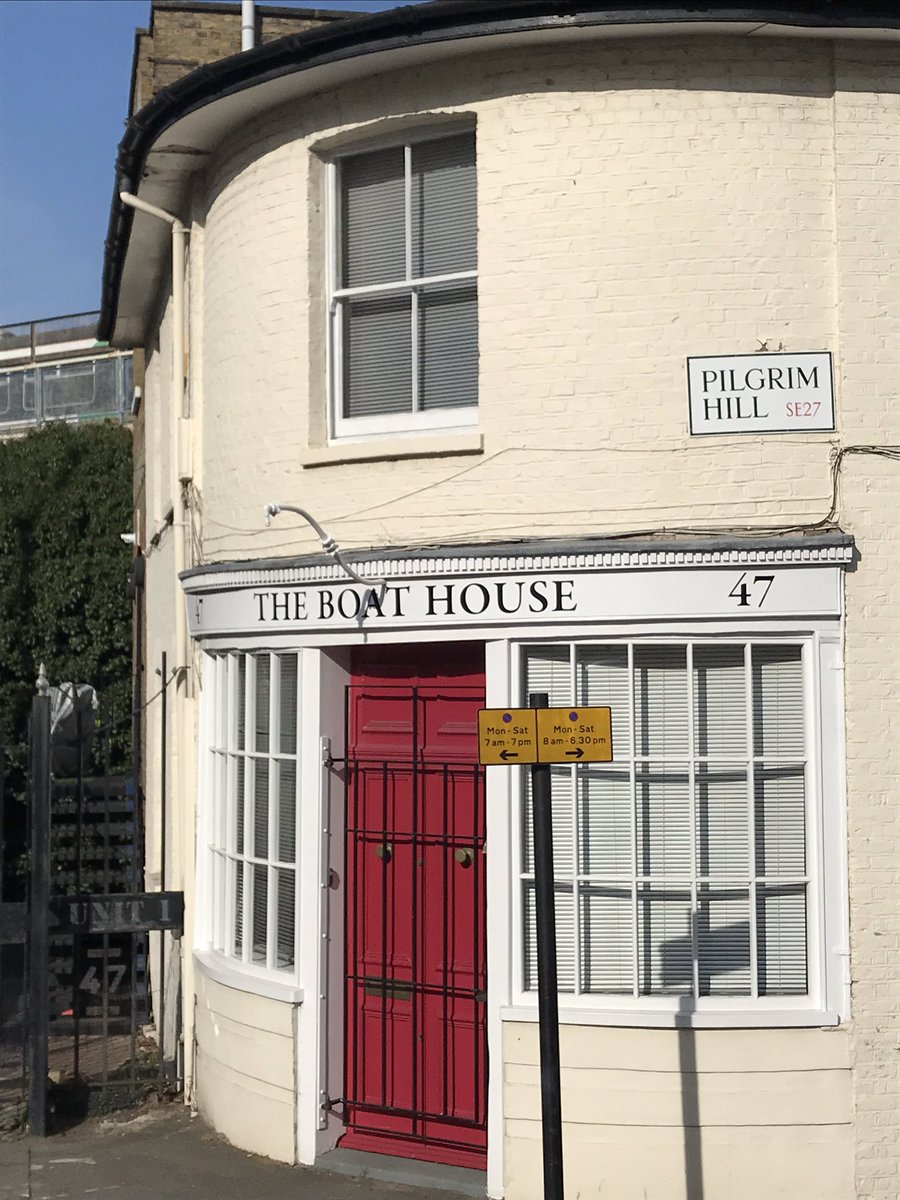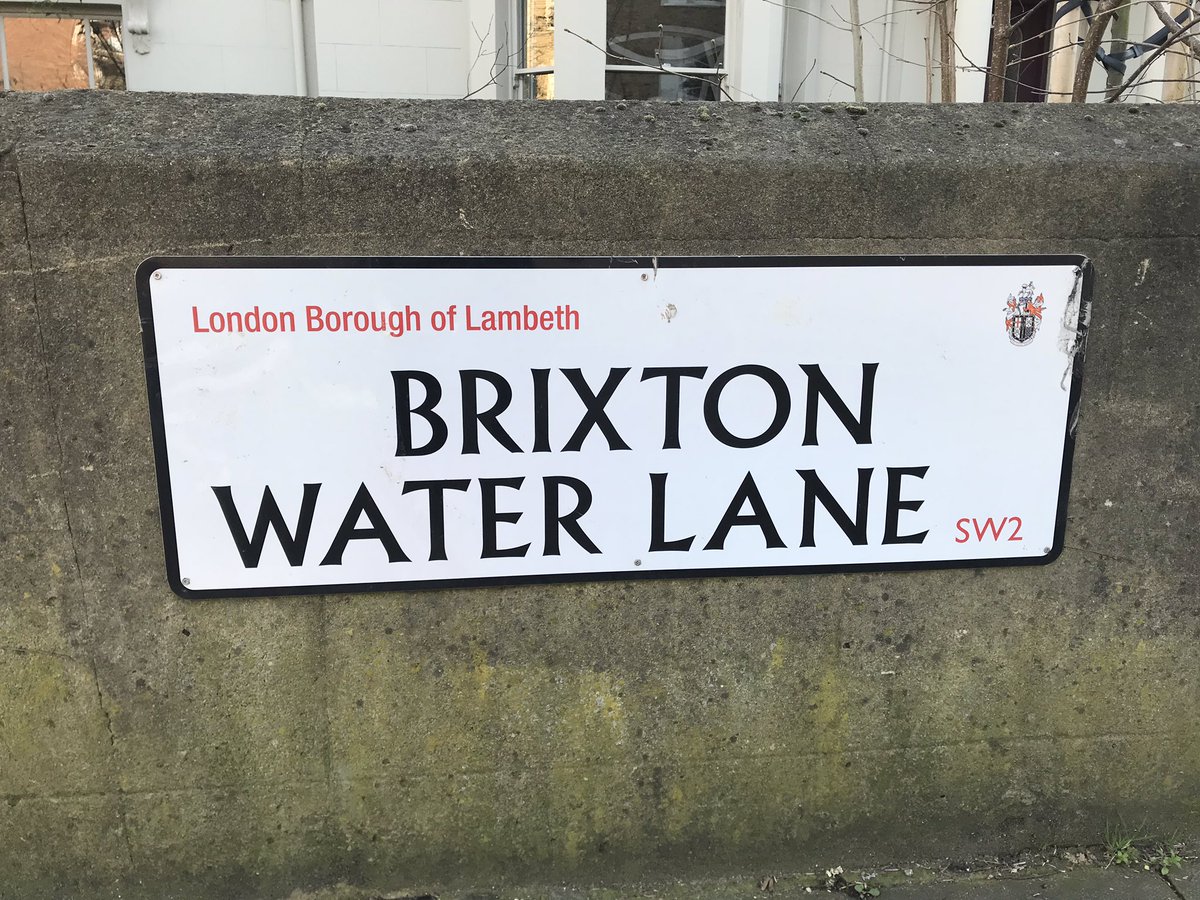Westow Park in Crystal Palace: the source of the #Effra 

Huge excitement! #Effra 

This tree is reputedly one of the last remaining from the Great North Wood, which once covered much of what is now south London, & after which Norwood is named #Effra 

The first sound of the #Effra’s waters! Behind the road is the graveyard of the Church of the Faithful Virgin, founded in 1848 as a convent by nuns fleeing the revolution in France 





The convent of Virgo Fidelis is huge! #Effra 



I learn from Wikipedia that a member of Mis-Teeq went to school here...
These were apparently once part of the House of Industry for the Infant Poor, the largest pauper school in London. It was relocated to Norwood, & what was then the rural edge of London, from Kennington in 1810 #Effra 



This grassy drive off Eylewood Rd covers the #Effra. The flow of its waters can be heard through the manhole covers 

OMG, you can open one of the manhole covers. Here, ladies & gentlemen, flowing through a drain at the foot of a long ladder, is the #Effra itself! 





A stink pipe! #Effra 

Gone, but not wholly forgotten... #Effra 

Ghostly traces of the river that once flowed here everywhere now... #Effra 

We pass Norwood Cemetery, theme of a song by @RevAndrewRumsey about a coffin reputedly found floating in the Thames after it had dropped into the #Effra & been carried all the way to Vauxhall
https://twitter.com/ericawgnr/status/1098703842340933633?s=21
The duck pond in Belair Park, Dulwich, fed by waters from the #Effra. I once played cricket here in a team of 5 players. We conceded 320 off 25 overs & lost by 280 runs. It gives me shivers, just being here... 

A reminder in this place name that water meadows once lined the entire course of the #Effra as it flowed through Dulwich 

I once took 4-28 here... #Effra 

The road junction at Herne Hill, looking towards Brockwell Park. In the 18th C, this was called Island Green. “All the water collected in the #Effra basin squeezes out through this narrow gap, & makes its way across the flat land towards the Thames.” 

The story that Elizabeth I sailed up the #Effra to visit Walter Raleigh in #Brixton is, alas, a myth, prompted by the demolition in 1892 of a 16th C house on Brixton Hill known locally as Raleigh House. A variant has the Queen coming by barge to visit Sir Edward Alleyn in Dulwich
Effra Farm, which stretched south of Coldharbour Lane in #Brixton, gave its name to the #Effra - which is only first recorded as the name of the river in 1831. ‘Effra’ itself probably derived from a manor called Heathrow, of which Effra Farm was a part.
“All the versions of the Queen Elizabeth story have a number of things in common. They all post-date the disappearance of the #Effra underground, & each of them with linked to a local feature at the moment when it is changed, threatened or destroyed” - Jon Newman
“The earliest version of #Brixton Police, built in the late 19th C, was a shanty-like construction which stood on a bridge over the #Effra, which still flows directly underneath” - @teabolton 

Spotted outside #Brixton Police Station... 

Named after Lord Loughborough, who owned a house nearby, & in 1664 was given permission by act of Parliament to “ dig & make the River or Sewer navigable”. A bomb in the Blitz temporarily freed the #Effra from its sewer here. 

The curve of the Oval Cricket Ground is defined by the curve of the #Effra & on of its tributaries. Here's the oldest known aerial photograph of it (1905) - taken from a balloon... 

“The seating banks constructed around the Oval in 1880 were built using soil excavated when the final stretches of the #Effra were culverted” - @teabolton
We pass through Ashmole Estate, where the blocks are all named after Victorian cricketers... #Effra
This, the final stretch of the #Effra, was once famed for its asparagus 

Journey’s end - we reach the Thames! #Effra 

The #Effra has 2 outfalls into the Thames, one on either side of Vauxhall Bridge. One is marked by a pink stone relief. The other, in front of the MI6 building, is where, in 2010, 7000 year old timber piles were found. They’d been erected on an island in the mouth of the #Effra. 



Huge thanks to @teabolton, for his excellent guidebook to London’s hidden rivers, & to Jon Newman, for his book River #Effra: South London’s Secret Spine 



And now back to Brixton, there to toast our feat in walking the line of the Effra with an @EffraBeer in The Effra... 🍻 #Effra 

Mmmmmmmm! @EffraBeer 

We’re all very tired after walking the #Effra... 

• • •
Missing some Tweet in this thread? You can try to
force a refresh






















